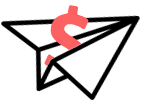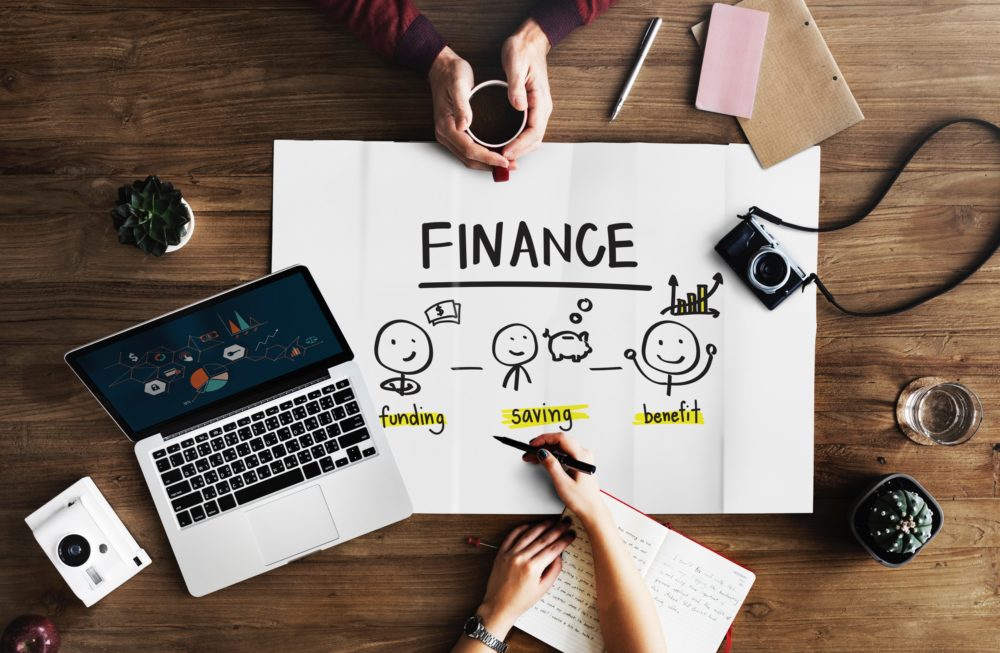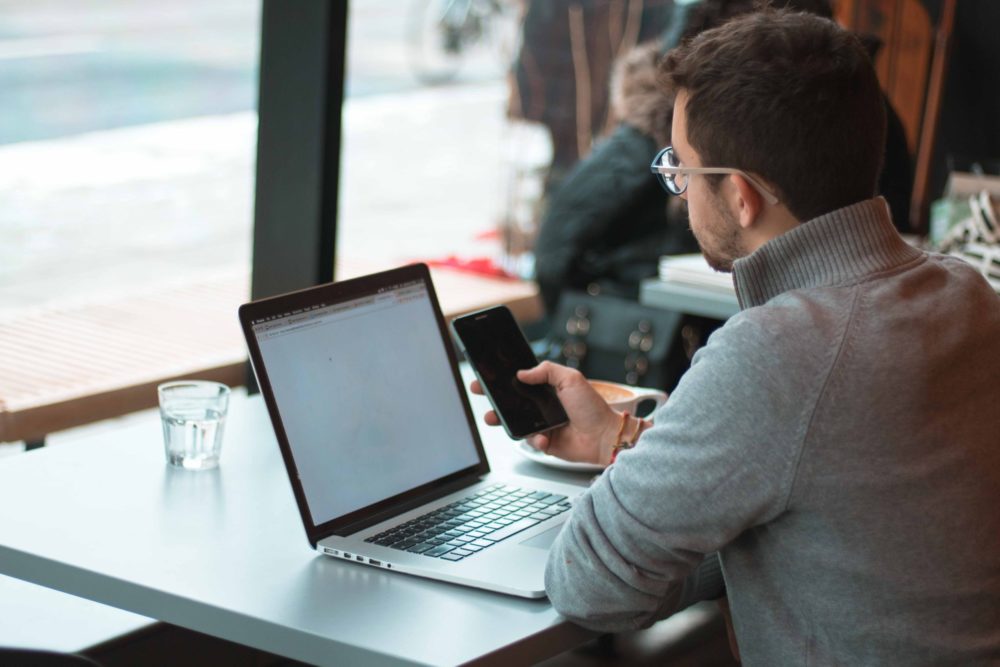Note: This article contains legal advice. We recommend you consult a lawyer before making legal decisions in your business.
Unfortunately, freelancers and solopreneurs have to learn how to ask for payment without being rude because unpaid invoices are commonplace in the industry. No matter how good of a service you provide, there will always be a client who will test your patience.
Here is a comprehensive guide on how to request payments professionally, without being rude. You will discover some tips on how to do it before and after the payment is due. You can also access useful phone and email scripts.
Besides requesting payments, you will gain some ideas on what to do in case your client refuses to pay up. Lastly, you will discover how you can avoid or, at the very least, minimize the chances of working with non-paying clients.

Get Weekly Freelance Gigs via Email
Enter your freelancing address and we'll send you a FREE curated list of freelance jobs in your top category every week.
What is rude in terms of asking for payment owed?
Delayed payments come with lots of frustrations. It affects cash flow and can alter the operations of your entire business.
However, you should never let the frustration get the best of you when requesting payments. First, avoid using harsh and unprofessional words. Maintaining professional relationships with clients is essential even when they are not paying on time.
Using harsh words, threats, and accusations only serves to alienate the client.
And remember that your client could be going through a financial issue. So the last thing you want is to ruin a relationship with a client who’s only going through a temporary setback.
What you should do instead is remain polite. And yes, you can ask for your payment directly and consistently without being rude.
Tips for how to ask for payment without being rude
Most freelancers and solopreneurs consider fighting for payments as part of the job. That’s how rampant this problem is. So here are some tips on how to ask for payments politely:
Confirm the invoice was delivered
Before sending multiple emails requesting payment, make sure the client received your invoice. If you’re a small business with an accounts department, speak to your staff and confirm that the invoice was sent.
If you are a freelancer, go through your records. Consider investing in an invoice app or software to ensure your invoices are always sent on time.
Send a payment request
Once you confirm the client received your invoice, it’s time to request the payment. Most businesses prefer emails because they are more professional.

If you start an online business and your only modes of communication are email and phone, then stick to the same channels. If, on the other hand, you also communicate with your clients through SMS messages, then it doesn’t hurt to ask for payment through SMS. Just make sure you’re keeping a record of the messages.
Whichever channel you choose, make sure to remain polite throughout your message. Here are a few things to keep in mind:
Be friendly
The tone of your message should be friendly and professional. You should also mention to the client that you are looking forward to doing more projects together.
Be direct
Your request needs to be as direct as possible without being overly pushy.
Create a short and straightforward message. If you have any other matter you need to discuss with the client, schedule it for a different time.
Attach the invoice
It’s good practice to attach the invoice every time you’re requesting a payment. That makes it easier for the client to see what payment you are talking about and how much they owe you.
Consider this example:
Hi [CLIENT NAME]
I hope all is well. This is just a quick heads up that invoice [INVOICE NUMBER], for a total of $[AMOUNT], is due seven days from now. I’ve attached a copy of the invoice for your reference.
Kindly let me know if you have any questions regarding the invoice or modes of payment.
Thank you, [CLIENT NAME]!
Best regards,

[YOUR NAME]
The email script ticks all the boxes. It’s super direct, which leaves little room for distraction. The tone is also warm and friendly.
Automate your process by using an invoicing tool
You can also use an invoicing tool like Bonsai to make your job easier.
They offer smart invoicing to automatically create your next invoice, remind your client for payment, accrue an overdue late fee and send you read-receipts. Plus, you can use any of their professional looking templates.
Using Bonsai’s global payment options and smart invoicing features, freelancers get paid an average of 13 days faster and have 3x fewer late payments.
Once sending your contract, stay up-to-date with automatic reminders to your client, as well as notifications for viewing and counter-signing.
Make follow-ups on the payment
Follow-ups are essential when the due date is around the corner, and the client is yet to make the payment. The follow-up emails need to convey a sense of urgency while remaining professional.
You can use the follow-up emails to remind the client of the agreed payment terms. If, for instance, you have a penalty fee, remind the client of the fee and the date it’ll come into effect.
How to ask for payment without being rude once it’s late
You’ve made countless follow-ups, it’s past the due date; now what? It’s at this point that most people start losing their cool.
Don’t let that happen.
Start by sending another payment reminder email, this time highlighting the fact that the payment is already due. It’s also the perfect time to mention your penalty fee if you have one.
Hi [CLIENT NAME]
I hope you’re having a great day. This is a quick reminder that invoice [INVOICE NUMBER] was due two weeks ago. Kindly note that a late payment penalty of 3% per month will be charged starting from [DATE] as per the payment terms.

Please clear the invoice at the soonest to avoid the late fee.
I’ll be happy to help if you’re having issues processing your payment.
Thanks. Kind regards,
[YOUR NAME]
If the client doesn’t respond to the email, get on the phone. A phone call is super direct, plus it stops the client from hiding behind the computer.
On the call, start by introducing yourself. Tell them your name and the project you worked on. It helps to point out the dates as well.
Next, mention briefly the follow-up emails you made.
Don’t accuse the client of ignoring your emails. Instead, use something like, “I believe you missed my payment requests for the project we worked on.” It’s much friendlier and passes the message just as effectively.
Here’s a nice example of a phone script:
Hi [CLIENT NAME]. This is [YOUR NAME]. We worked together on [PROJECT NAME] about [WHEN YOU COLLABORATED]. I’ve sent several emails regarding payment for the project, but I believe you missed them. I used the following email address when communicating with you; [YOUR EMAIL ADDRESS].
Being professional and friendly on the call will help you get a positive outcome without ruining the relationship. Once you’re done with the call, send another email.
Reference the phone call you just had and send the invoice with payment details once more.
Templates for how to ask for payment without being rude
Generally speaking, you need two types of templates. The first one is for email reminders sent before the due date. The other templates are for follow-ups after the due date.
Here are some scripts you could use:
Template 1
Use this template one week before the due date.
Hi [CLIENT NAME],
I hope you’re having a wonderful day. This is just a quick reminder that the payment for [PROJECT NAME] is due one week from now on [DUE DATE].
Please find attached the invoice for your reference.
Don’t hesitate to reach out if you have any questions.
Thanks. Kind regards,
[YOUR NAME]
Template 2
Send another payment reminder if it’s the due date and the client is yet to pay up. Here’s an email script you could use.
Hi [CLIENT NAME],
I hope everything is fine over there. I really enjoyed working with you on [PROJECT NAME].
This is to remind you that the invoice for [INVOICE NUMBER] is due today. You can make the payment through any of the methods highlighted on the invoice.
I’ve also attached a copy of the invoice for your convenience.
Please get in touch if you have any additional questions.
That you, [CLIENT NAME].
Kind regards,
[YOUR NAME]
Template 3
If the client hasn’t paid several days after the due date, then it’s time to create a sense of urgency in your emails. Here is one way to do it:
Hi [CLIENT NAME].
I hope you’re doing well. This is a reminder that the payment for invoice [INVOICE NUMBER] was due on [DATE].
Kindly clear the payment as soon as you can.
Thank you,
[YOUR NAME]
Template 4: One Week After The Due Date
You need to be firm from this point onwards. So point out that the payment is overdue.
Hi [CLIENT NAME],
I hope all is well. Based on my records, I’ve yet to receive the payment for invoice [INVOICE NUMBER]. Kindly note that the payment was due one week ago.
Please send the payment as soon as possible,
I have attached the invoice with the amount due and the method of payment for your convenience.
Thank you. Kind regards,
[YOUR NAME]
Template 5: One Month After The Due Date
It’s time to be more serious. Mention your late penalty and if the fee is already active, give the client the updated invoice. Here is a script for you:
Hi [CLIENT NAME],
I hope you’re well. According to my records, the payment for invoice [INVOICE NUMBER] is now one month overdue. A late fee penalty of [PENALTY FEE] has been added. That brings the total amount due to [REVISED AMOUNT].
Kindly let me know when the payment will be made. I’m available if you have any questions.
Thank you. Kind regards,
[YOUR NAME].
Template 6: Text Message Script
Here is a script you could use if you want to request the payment via SMS.
Hi, [CLIENT NAME]. It’s [YOUR NAME] here. I worked with you on [PROJECT NAME]. I just wanted to touch base with you regarding the overdue payment for the project. Is this a good time?
Template 7: Phone Call Script
Consider this script if you want to make a phone call.
Hello, [CLIENT NAME]. It’s [YOUR NAME] here. I worked with you on [PROJECT NAME]. I sent several emails about the payment for this project. I think you might have missed them.
Now that I’ve got you on a call, it would be great to discuss payment for the project. At the moment, I’m owed [AMOUNT]. This has been outstanding since [DATE]. Have you had problems making the payment?
Is there anything I can do to help facilitate this payment?
Your goal is to get a confirmed payment date, and some clear next steps. That helps set expectations. You might choose to record this call if you plan to bring legal proceedings at a later date.
Let’s say you do all this, and the client fails to pay; what do you do next?
Tips for getting paid on time
Dealing with non-paying clients is emotionally draining. Not to mention it is unnecessarily expensive and can cripple your business.
Sadly, there’s no foolproof way of avoiding non-paying clients entirely. However, several steps can minimize the risk of working with a problematic client. Here is what you can do:
Conduct thorough research on the client
Avoid most non-paying issues by doing a background check on every new client. Go online and search for the company or name of the client. If it’s a big business, check their rating on the Better Business Bureau.
You can also use your networks to get more details on the client.
What should you look for during the research?
First, check whether there are any complaints of late or non-payments. Second, look out for any details that may hint the client is going through financial difficulties.
Note that just because the client has several complaints of late payments doesn’t mean you should avoid them. The research is merely for risk assessment. So you also need to ask yourself how much risk you are willing to take.
Secondly, is there a way to reduce the risk?
Create a legal contract
Having a legal contract in place will help ensure you get paid. Don’t assume the client is too big a business to not pay on time. Get the agreement in writing.
A legal contract makes your agreement official and clears up some critical details. Resolving invoice disputes and other issues is also much easier when there is a written contract.
The contract should contain the following details:
- Details on contracted work – it should show the type of work you’re supposed to do.
- Payment term – when is the payment expected after invoicing? Make sure this information is covered in the contract.
- Payment method – what mode of payment will be used?
- Deadline – when is the exact due date of the payment?
- Late payment fees – if you have a late payment policy, include it in the contract.
Add any other details that apply to your specific business model. If, for instance, you have a payment schedule, include that information.
Offer flexible payment options
You can avoid some non-paying issues through flexible payment options.
Let’s say you’re working on a $20,000 project. Instead of asking for the full amount upon completion, break it down into installments. For example, monthly payments.
You can also use project milestones. For instance, you can agree to receive the first installment once 30% of the project is done. And so on.
The approach reduces the burden on your client, making it easier for them to keep up with the payments. It also ensures steady cash flow for you. The milestone model reduces your risk and increases the chance of getting paid.
Consider asking for a deposit
Consider asking for a deposit before you start working on the project. It’s always a good sign if a client pays the deposit without any issues. A deposit reduces risk. And if they turn out to be problematic, at least you won’t be chasing 100% of the payment.
If you can’t ask for a deposit, consider the flexible installment payment model.
Introduce late penalties
Finally, you can use late penalties to push clients into clearing invoices on time.
If you have a late penalty policy, communicate it to your client in advance. You should also mention it in your follow-up payment request email.
Final Thoughts
In this article, we covered four main subjects. First, you learned how to ask for payment without being rude. I took you through tips on how to request payment before and after the due date.
In both cases, I highlighted the importance of keeping your cool and being kind. The strategy helps you get the money you’re owed while maintaining a working relationship with the client.
Next, I gave you templates on how to request payments through phone calls and emails. Feel free to use these templates and adjust them as necessary.
Then we looked at what you can do in case the client doesn’t pay on time. There are basically three options here. Hire a collections agency, file a suit in a small claim court, or cut your losses and let go of the client.
Lastly, we discussed what you could do differently moving forward to avoid non-paying clients. I shared six actionable tips that are pretty easy to implement. With all this information at hand, I’m confident that you will do better requesting payments from your clients.
Keep the conversation going...
Over 10,000 of us are having daily conversations over in our free Facebook group and we'd love to see you there. Join us!





